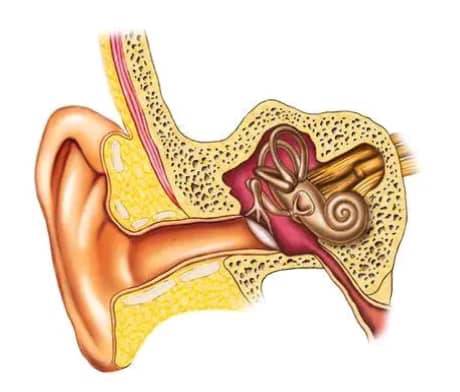There are different potential causes of hepatitis.
some of the most not unusual include viruses, microbes, infection, capsules, excessive alcohol consumption, metabolic problems, nonalcoholic steatohepatitis, and autoimmune illnesses. The initial signs and symptoms of acute hepatitis are especially nonspecific, inclusive of fatigue, fever, tough pores, skin rash, joint and muscle ache, nausea, vomiting, and lack of appetite, in addition to upper stomach pain.
The more the infection impairs liver function, the more specific the signs and symptoms. Impaired coagulation thing synthesis within the liver results in more common bleeding. In the lengthy term, persistent hepatitis can result in cirrhosis or maybe hepatocellular carcinoma. So, viral hepatitis ought to be taken significantly now not best due to the danger of contamination, but additionally because of the capability long-term consequences. Now, permit’s delve into the various styles of viral hepatitis. We’ll in the main attention on the transmission route, prognosis, and characteristics of every kind
Hepatitis A is common in tropical and subtropical regions.
 |
| Hepatitis A |
In high-income countries, it accounts for about a quarter of cases of acute hepatitis. Hepatitis is a plague. However, more examples are obtained for the period of travel abroad. Hepatitis A Contamination with an infectious disease, acutely, HAV, usually occurs via the fecal-oral route, for example, through contaminated water.
In young people, hepatitis A is usually asymptomatic. A full and undoubtedly debilitating medical course will become much more likely with advancing age. Although, it remains very rare. Hepatitis A usually resolves without any side effects and is by no means chronic. Important differential analysis with respect to hepatitis E is The latter is associated with a higher chance of complete contamination, especially among pregnant girls. We will return to this later.
Hepatitis is an endemic disease associated with single-stranded RNA viruses, particularly from its family of viruses. Its incubation period is relatively quick with two to six weeks. Liver inflammation usually results in a marked increase in transaminase levels. One week after the onset of infection, viral RNA can be detected in blood serum and stool samples. Vendors are infectious for HAV at some point during the incubation period and until hepatitis A is virtually identified by serologic check-out. The presence of anti-HAV IgM antibodies in addition to clinical symptoms serves as evidence of acute infection. Also, after immunization, individuals may display anti-HAV IgM for a short period of time. The sole presence of anti-HAV-IgG antibodies precludes infection or immunity through vaccination.
Hepatitis A pre-exposure prophylaxis is usually recommended for all vacationers going to nations in which hepatitis A is endemic, patients with preceding or contemporary liver ailment, hemophiliacs requiring transfusion, and individuals with an elevated risk of contamination, for example, occupational threat organizations. these include people working in the health sector and in network offerings.
Hepatitis B
Hepatitis B infection is one of the maximum common viral infections in people worldwide. contamination with the hepatitis B virus is particularly transmitted sexually, even though hardly ever parentally or perinatally. Acute hepatitis B contamination is generally asymptomatic or slight. Extrahepatic manifestations in the shape of skin rashes, joint and muscle pain, or different neurological, cardiac, or hematological symptoms can arise. In about five% of instances, the virus remains in the frame after acute infection. those people both grow to be healthy carriers or increase persistent hepatitis B, with the latter encompassing an extended risk of growing liver cirrhosis or hepatocellular carcinoma.
 |
| Hepatitis B |
The genome of the hepatitis B virus, in brief, HBV, is the most effective human hepatitis virus that isn’t composed of RNA but round, double-stranded DNA. It’s a member of the hepadnavirus circle of relatives. HBV enters hepatocytes through a bile acid transporter, which we’ll come upon once more later when we look at hepatitis D.
HBV has an incubation period of one to six months, the longest of all viral hepatitis. Unlike HAV, HBV migrates most efficiently from hepatocytes into the blood. As a result, it is the easiest to detect in serum. To diagnose hepatitis B, a serologic test is also performed. However, it is more complicated than hepatitis A. Therefore, we created a Chalk Communicate episode that specifically addresses hepatitis B serology. Here are some important points: To diagnose acute and chronic hepatitis B infection, HBs antigen is screened, which is the primary parameter detectable in the blood. In addition, transaminase stages are accelerated. In chronic hepatitis B, this increase is permanent. Similarly, transaminase levels correlate with disease severity. A sign of recovery or successful immunization is the detection of antibodies, that is, anti-HBs antibodies, without HBs antigen or HBV DNA. Pre-exposure vaccination is generally recommended as a routine immunization for all individuals.
Is Hepatitis B a greater (scientifically) complex sickness than Hepatitis C? if so, why?
the opposite issue with HepB is it may surely attain immune break out through a mutation which leads to a virion without the envelope HBeAg. What this does is it stops the immune machine from successfully clearing the virus. the precise mechanism for this escape isn't always absolutely understood (the envelope and core gene proportion similar to genetic code but the envelope have an extra coding vicinity).
as soon as this has taken place, you emerge with more circulating virus and the chance of cirrhosis simply will increase as the virus is not in test.
in addition, the HepB DNA polymerase does not have evidence-reading abilities so random mutations are generated at some point of replication. this may additionally result in mutant floor antigens which are also capable of immune getaway due to altered immunogenicity that may intrude with assays and vaccination failure.
finally, chronic HepB isn't always curable on the modern level even as most people of HepC are. in order that makes already tells you a lot.

.jpg)

.jpg)


